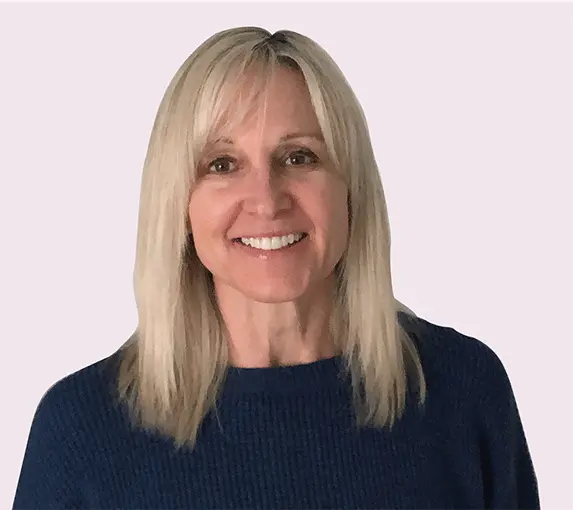
Episode 105: The impact of STEM sentences and mathematical vocabulary on pupils’ understanding of mathematics
Shakespeare’s sonnets, Accepting maths as a language, and more. In this episode, Andy and Adam are joined by Jo Sawyer, this time to look at the impact of STEM sentences and mathematical vocabulary on pupils’ understanding of mathematics. What’s a STEM sentence? Can wrong language cause long lasting damage? Plus, Jo shares how new terminology can help simplify mathematical talk, rather than make it complicated.
More Podcasts on Education
Continue listening to our educational experts
Meet your instructors
The school of school podcast is presented by:

Andy Psarianos
@andy_psarianos

Adam Gifford

Robin Potter
Special guest instructor

Jo Sawyer
Never miss an episode
Subscribe to get the latest The School of School podcasts delivered to your inbox.
Podcast Transcription
Andy Psarianos
Hi, I'm Andy Psarianos.
Robin Potter
Hi, I'm Robin Potter.
Adam Gifford
Hi, I'm Adam Gifford.
This is The School of School podcast. Welcome to The School of School podcast.
Robin Potter
Are you a maths teacher looking for CPD to strengthen your skills? Maths — No Problem! has a variety of courses to suit your needs. From textbook implementation, to the essentials of teaching maths mastery. Visit mathsnoproblem.com today to learn more.
Andy Psarianos
Well, welcome back everyone to another episode of The School of School podcast. And super special day today. We've got a guest. Yeah, I'm really happy we've got her here. It's Jo Sawyer. Jo, do you want to say hi and tell us a little bit about yourself?
Jo Sawyer
For sure. So, hi everyone. I'm Jo Sawyer and I'm passionate about mathematics. I work in the UK as a primary maths teacher part-time and I spend the rest of my week doing maths consultancy in primary schools. I do some ITT training and then anything working from new teachers all the way up to experienced teachers. Developing maths, particularly teaching for mastery and it's a real privilege.
Andy Psarianos
Fantastic. Okay, so we're talking about STEM sentences today, and in particular the impact of STEM sentences and mathematical vocabulary on pupil's understanding of mathematics. All right, Jo, what does that mean?
Jo Sawyer
Okay. Well, I went for this one today because I've taught for, as I said, over 20 years and vocabulary has always been something that I've used generally, shape and obviously synonyms for addition and subtraction. But it was only recently that I did some training and I started to look at specific vocabulary for rules. So for example, division dividend, divisor and quotient, and also starting to look at specific types of additions, so aggregation and augmentation for example.
And this was completely new to me, never come across it before. And I thought I'd always been an okay teacher and I really questioned whether this was going to make me better at my job and it really has. The question is, should everybody be using this and why should they be using it and what impact is it going to have? So say if we go with dividend, divisor and quotient or add end plus end equals some.
I found that introducing that with my children and these children were only seven years old, they're young children. It made them really think about the concepts in mathematics and it was allowing them the opportunity to make connections between ideas and generalise about the maths in a way that they'd never ever done before and I'd never encouraged them to do before.
So I started to push those boundaries a little bit and the children were really beginning to grasp more complexities of maths with greater ease and it was really incredible. So if I give you an example there, I had a little boy who discovered that in addition, if you increase one add end and decrease the other add end by one, then the sun remains the same. And it was mind-blowing to this child that these patterns were there and it was just a real light bulb moment.
And then taking on from there, I started to use STEM sentences, which are really mathematical sentences that encourage children to understand the concepts of mathematics. I'm using one in class regularly at the moment about, if the whole is divided into equal parts, and I have of them to help really understand about fractions. And I wanted to think about how this was going to support all learners, so struggling learners and really advanced learners.
And what I discovered over time was that my struggling learners had a basis on which to help them get support with the mathematical ideas, but my advanced learners were able to use the STEM sentences to help them reason and make more concise written explanations and so on. So I think that's it really. Should everybody be using these and are they successful with all teachers, or does there have to be a mathematical understanding there by teachers before they're used? So would everybody benefit from the approach? And that's where I'm at with it.
Adam Gifford
Can I jump in here, Jo? Just to ask something.
Jo Sawyer
Please.
Adam Gifford
Without getting into the specifics at this stage of what you've just talked about, do we need a reminder of this and a structure of this, because there's still a hangover with mathematics that it's not a language, that it's simply a load of numbers that are written down and we don't necessarily read it, or the language aspect of it is not something that that's associated with maths in the same way when we read a novel. What we are doing is decoding the abstract of the alphabet to make the words to gain understanding.
Do you think that's probably the first hurdle? Is that mathematics is a language that has to be accepted in the first instance by teachers in classrooms? Is that something that you've come across that's a big difference between English and maths when it comes to language full stop?
Jo Sawyer
I think so because people often assume that mathematical language is numerical, but I'm pretty sure it's 400 mathematical words are needed for children to do well in the key stage one. And it's all very much mathematical language. So if we're going to develop that for a full understanding, there's quite a large range there. But it's really about the teachers understanding it as well.
So I think first of all, before we present this language, the more complex language to the children, it really is going to benefit the teachers to understand mathematical ideas and thoughts as well. So I think it's challenging on different levels. You've got to challenge the children to know and understand the language, but you've got to get it across to the teachers that it's really crucial to help them be better teachers. What have found is that some people have had a fear, and I'm not going to lie, I was one of them.
I had a fear that some of the language we were using was too complex for the children and it was just going to create more difficulties. But I got to the point where I was actually, I'm going to have to try this in my room because I'm making this assumption that it's not going to work. And I threw myself in and I have never ever been as shocked in my teaching is that, yeah, because the children were just taking it on board. But they do, don't they. I mean, in phonics, if they can learn about all of the tri graphs and di graphs and everything else, then they love that language and it really helps them to understand the ideas.
Sometimes adding in more complex language helps the mathematics become simpler because there's a word for something specific rather than a sentence. So if I'm saying to children in subtraction, the first number is the menu end, then they can say the menu end, rather than the number at the beginning of the sum of, the number that we are taking away from. So it actually simplify some of the mathematical talk between children as well.
Andy Psarianos
So I suppose when we teach mathematics, one of the competencies that children need to have, we know that will separate a successful mathematician from one who may continues to struggle, is the ability to communicate their ideas and share those ideas. And often that's a barrier. So for example, if you look at children with English as an additional language, for example, in the UK, that can become a hindrance on their performance because they struggle with communicating their ideas, even though conceptually they might understand the concept of, I don't know, let's say one of the manifestations of division, which might be fractions, let's say. They can understand it conceptually. They don't have the vocabulary to explicate their thinking, so therefore they seem to be struggling.
And also the more abstract notations that we use in mathematics can also be a hindrance in the sense that, well, you're putting one number above another, that's just an abstract concept to represent an idea. And that can be a stumbling block. Because while you were talking, Jo, it was really fascinating to me. I was trying to think, okay, of what I know about learning theories and of what I know about the research that I've read and the key points that we try to structure, for example, the national problem programme on, how does this apply?
And I suppose if I were to try to put some educational jargon on it, this is really about structuring. So if we bring it back to let's say, Zoltan Dienes'. And Zoltan Dienes' saw different stages of introducing concepts. He'll say that initially you don't want that stuff, because that's just going to mess everything up. Because the minute you start labelling things, if you label things too early, the danger is that, to put it in PIJ terms, children are merely going to assimilate information and they're not going to accommodate for this new information.
So there needs to be a struggle where effectively you're challenging, your understanding of a concept and you're trying to accommodate for this new discovery that you've just had, in your own understanding and your own terms. And then if you, I think do it too early, the danger is that you're just labelling things before the concepts are actually understood.
But then of course the next phase after you've had that exploration is to then structure it. And then that's really where you need to introduce the labels and they say, okay, that thing that you just experienced here that you're struggling so hard to describe, we have a word for that. And that's called, I don't know, a denominator. And when we talk about denominators, we're talking about this phenomena that you just experienced. You cut this cake into equal size pieces. When you count how many equal size pieces you have of that whole thing, that's the denominator.
Because otherwise, like you just said, Jo, the child has to explain what they did and say, "I cut the cake into six pieces, and each one of those pieces is an equal size." Well now you say, you're fixing a label. So you're structuring this idea around a concept that we all can share. Have I got it right or am I just on some wild tangent here?
Jo Sawyer
No, I think that's exactly right, Andy. I would agree. I mean, we all would look to go with concrete experiences first and the children having that informal exploration. And then it's as they're discovering that you mould their thoughts with that key vocabulary. And when you're creating generalisations or reasoning, I think it's so much more powerful when it comes from the children in what they've explored. If you tell them something, it doesn't really have meaning does it. It has to be found out and discovered by the children for it to be the most powerful. And bobbing the vocabulary in at the right point is perfect. I'm in fractions at the moment, I'm teaching my class and we didn't introduce denominator until about 12 hours in, because that was the right time when they explored that and they had an idea about parts and equality and all of those ideas.
Andy Psarianos
And I guess the danger is that if you don't use the right vocabulary, and you use the wrong vocabulary thinking that maybe you're helpful like sometimes... And this is the challenge as authors or as an author or a textbook writer, these are the things that you're challenged with. So you're going to say, okay, I need to teach this concept, but I can't use the word yet, because the word is just jargon at this stage and it'll be meaningless to them. So how do I make them experience this concept in the early stages? How do you structure the lesson? What's the journey? What's the first bit? What's the next bit? How do you unveil this thinking? Give children the learning experiences that they need in the right order so that they develop the thinking that you want them to have. So you can then label it and say, "Okay, we'll put this in this nice package." That's the difficulty for authors.
But it does raise a lot of questions, because one of the traps I think people can fall into is when they use the wrong language to try to maybe be helpful and put a bridge in between two different things, it can actually be very damaging. So there's one thing that jumps into my mind and this was an official document that I read that was published by people who know what they're talking about and so on and so forth. And the suggestion was to use the word fairness. And to bridge the concept of fairness with equality. Fairness and equality, that's a philosophy discussion.
But I can tell you that fairness and equality are not the same thing and they are explicitly not the same thing in mathematics. So if you try to introduce the area of fairness to bridge a gap to let's say this notion of equality that's so important in mathematics, actually, you might be creating a misconception that you'll spend years unpicking just with a subtle hint that might just actually introduce a lot of damage. This a tread carefully area.
Adam Gifford
Can I jump in on a slightly different angle? Because I just think with this whole conversation, I think sometimes we miss a massive trick in schools, because there's a place where we do this really well and that's when we teach English. So for example, if the end result is I want children to write a story about walking through the woods, what's the first thing you want the kids to do? You take them for a walk in the woods. You don't give them words, don't give anything like that. Let them experience it. So they'll take from it. And then what do we try to do? We start to develop the ideas around it. So when we're back in the classroom, tell me how you felt? Did you smell anything? Did you hear anything? Da, da, da. And we start to structure it a little bit more. Structure, structure, structure.
Eventually we come into the words that we choose themselves. Remember, they're being represented in the abstract, using the alphabet. Simply just in a different arrangement of letters. That's all we are doing. So then we're developing the words and we think, can we come up with a better word than this? So the tree was brown or whatever, whatever it might be. I don't know. It was a bit rough. Have we got any other words for rough? It's textured. It was this. It was that. It was something else. Okay, what's going to fit best here? How can we show that?
So now the walk in the woods is now on a piece of A4 paper. We don't even have to go anywhere. And it's just being shown in the abstract using the woods. Well, we've already got these structures and it feels sometimes with me is that links are not made with maths. If we think about maths, and you're talking about fractions. I don't know. There you go. Start to divide these things up. Are they equal parts or not equal parts? Da, da, da. When does that become a problem? How many of these equal parts does it take to put the cake back together and make one whole cake? Can we write that down? How can we do it? Because we can't keep buying cakes. The school budgets blown. So how can we do that?
So then we move to paper. And then ultimately, how can we write this down? How can we record the experience that we've had in the abstract? Yes, we could do it with words, but there's an even quicker way of doing it. And this is what we do. And I can't see the difference between the two processes, because it's experiential at the beginning, and all we are doing is recording something that's happened in the most efficient way possible.
And I think sometimes we miss a trick by not making that link and thinking that this whole magic is created in maths, but that's just simply not the case. I think that if we only present the abstract, we've got an issue. Because then those symbols mean nothing. We could just say that, yes, five plus two equal seven. But actually I want children to be able to read that story. What did that represent for you? Well, I took, don't know five leaves and Dave had another two and we put them all together. So that's your story there. Wow. And it's all contained in five plus two equals seven. That's brilliant. What a story. Man, that's a good one. Who else has got a story?
And I just I don't know how often that link is made, and that worries me because it feels like we are making it have the potential to make it harder and that scares people. And I don't know that it necessarily should. But that's the way I see it anyway. I just don't know that there's a massive difference in the process.
Andy Psarianos
I think we've only scratched the surface on this topic, and we're going to have to come back and revisit this again guys. Because there's so many different directions we could go from here. Talking about the relationship between mathematics and language or mathematics as a language or the use of mathematics in language might be an interesting twist to look at it. Where's language mathematical? Help bridge that gap.
For sure there's obvious things I don't know, the lyrics of a song or just a song in general. Look at a rap song for example, or something that I don't spend a lot of time listening to, but I hear sometimes because my kids listen to it. It's all math. Every single aspect of rap is maths. It's all patterns and specifics and very complex syncopations that could all be explained mathematically.
Anything from the notes, the rhythm, the cycles, the repetition, all those things. You could write a rap song in a mathematical equation, I'm sure. But it's not just that. It's even if you just look at the most creative, artistic literature can be explained in mathematics, in mathematical terms. Look at, I don't know, Shakespeare sonnets. It's all math. It's all about math. So anyway, so we got-
Jo Sawyer
Can of worms.
Andy Psarianos
... we got to wrap this up. But we're going to have to come back and talk about this some more. This is a really exciting topic. Thanks Jo, for joining us today.
Jo Sawyer
Thanks for having me.
Andy Psarianos
Thank you for joining us on The School of School podcast.
More Podcasts on Education
Continue listening to our educational experts
